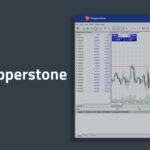FX quotations can be quite complex for the typical person. It takes some expertise and understanding to realize that we can deliver these quotations in more than one way. Furthermore, it takes some getting used to before a person can swiftly interpret these quotes and make decisions based on them. This article will discuss the two forms of forex quotations and their abbreviations.
Nomenclature
Any foreign exchange market quotation always includes the currency’s abbreviation. The international standards organization has developed standard currency keys or currency codes (ISO). These keys are used in transactions all over the world.
The key consists of three alphabets. The first two key alphabets represent the country the money belongs to, while the third represents the currency’s first alphabet. As a result, the US dollar is shortened as USD, the Indian rupee is abbreviated as INR, the British pound is abbreviated as GDP, and the Japanese yen is abbreviated as JPY.
Check out this link for more information about this article: https://tradefx.co.za/trade245-broker-minimum-deposit/
Direct Quotation
The quote is expressed in terms of home currency using this procedure. This means that the rate expresses the relationship between one unit of home currency and one unit of foreign currency. As a result, if a unit of domestic money were swapped, how many units of foreign currency could result? This strategy is often referred to as the price quotation method.
Therefore, if the value of the native currency rises, must exchange a lower amount of it. On the other hand, a drop in value would need to exchange a huge domestic currency. Hence, the quotation rate is considered to have an inverse connection with the value of the home currency.
Usage: The direct quote approach is one of the most often used quotation methods worldwide. This is the standard way for quoting forex prices, and it is considered de facto until another method is specifically indicated.
Indirect quotation
This is the inverse of the direct quoting method. The quote is expressed in terms of foreign currency using this procedure. As a result, this rate is based on one unit of foreign currency. It then expresses how many local currency units are required to obtain one unit of a foreign currency. This statement is sometimes phrased in terms of 100 units of foreign currency. This strategy is also known as the quantity quotation method.
Because this approach is quoted in foreign currency, the quoted rate is directly related to the local rate. When the exchange rate rises, the home currency’s value and vice versa.
Usage: Indirect currency quote is extremely uncommon. The indirect quoting method is only used by convention in commonwealth countries such as the United Kingdom and Australia.
Conclusion
The Euro and Dollar pair is a notable exception to the preceding norm, as the Euro is still the domestic currency.
As a result, any forex quotation can be construed in various ways depending on the sort of quotation issued, the location of the quotation, and a variety of other market conventions and norms.








